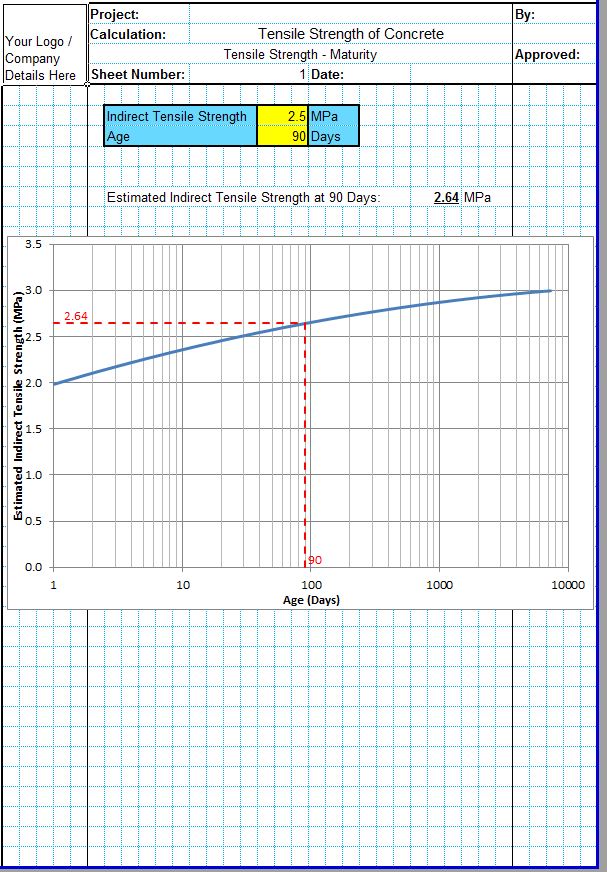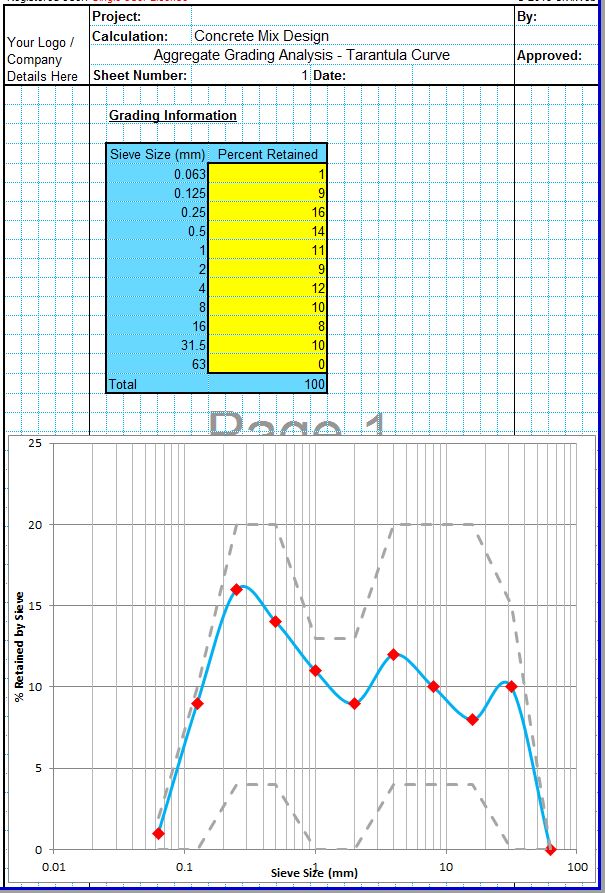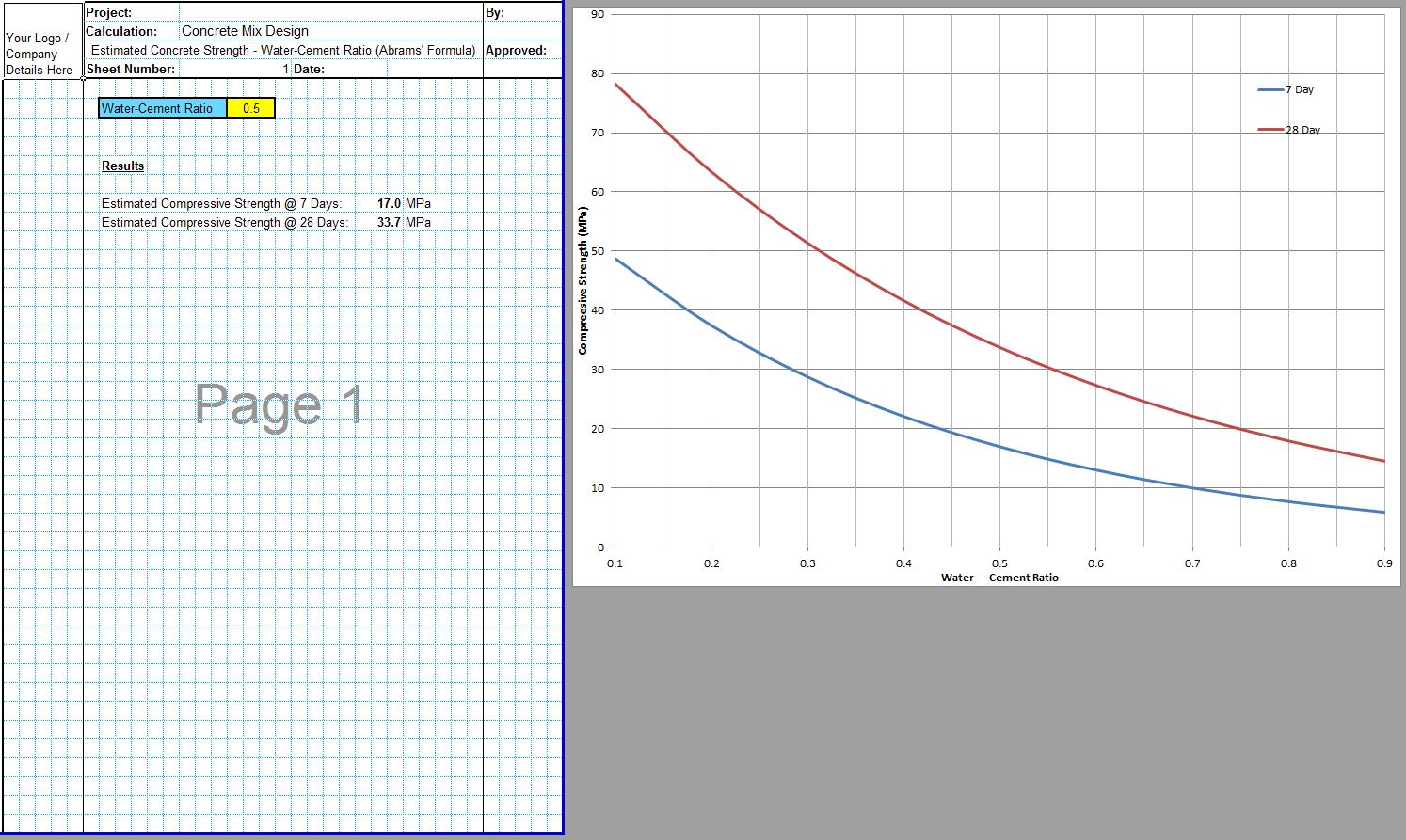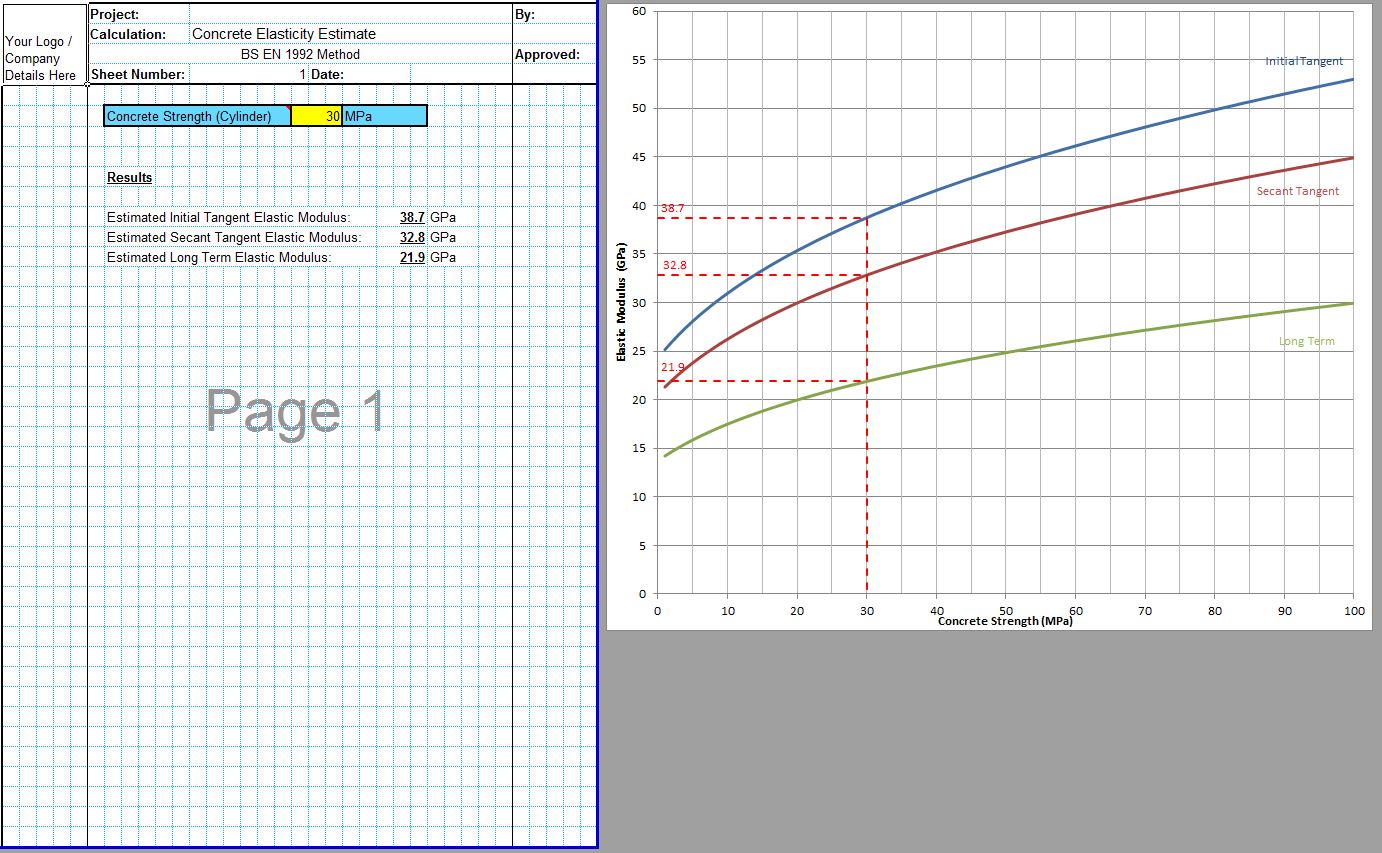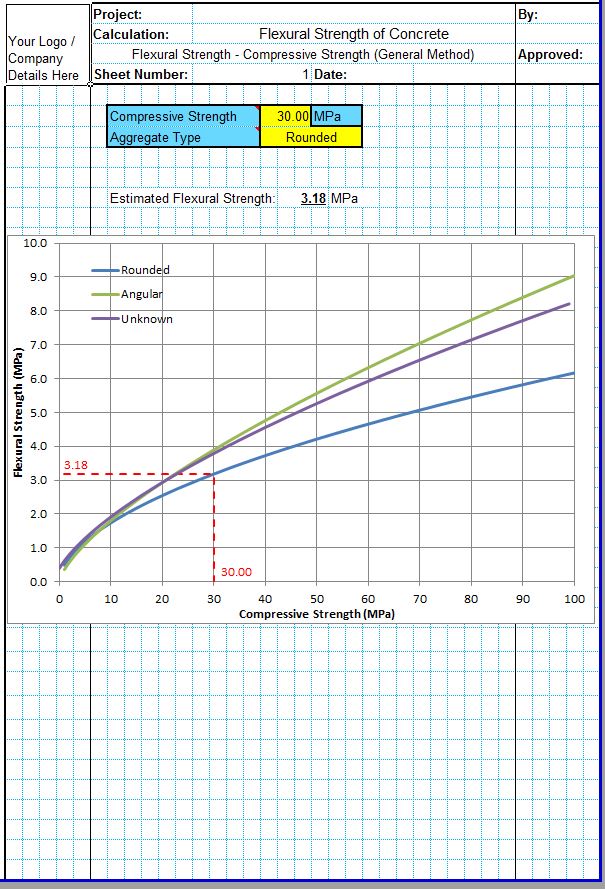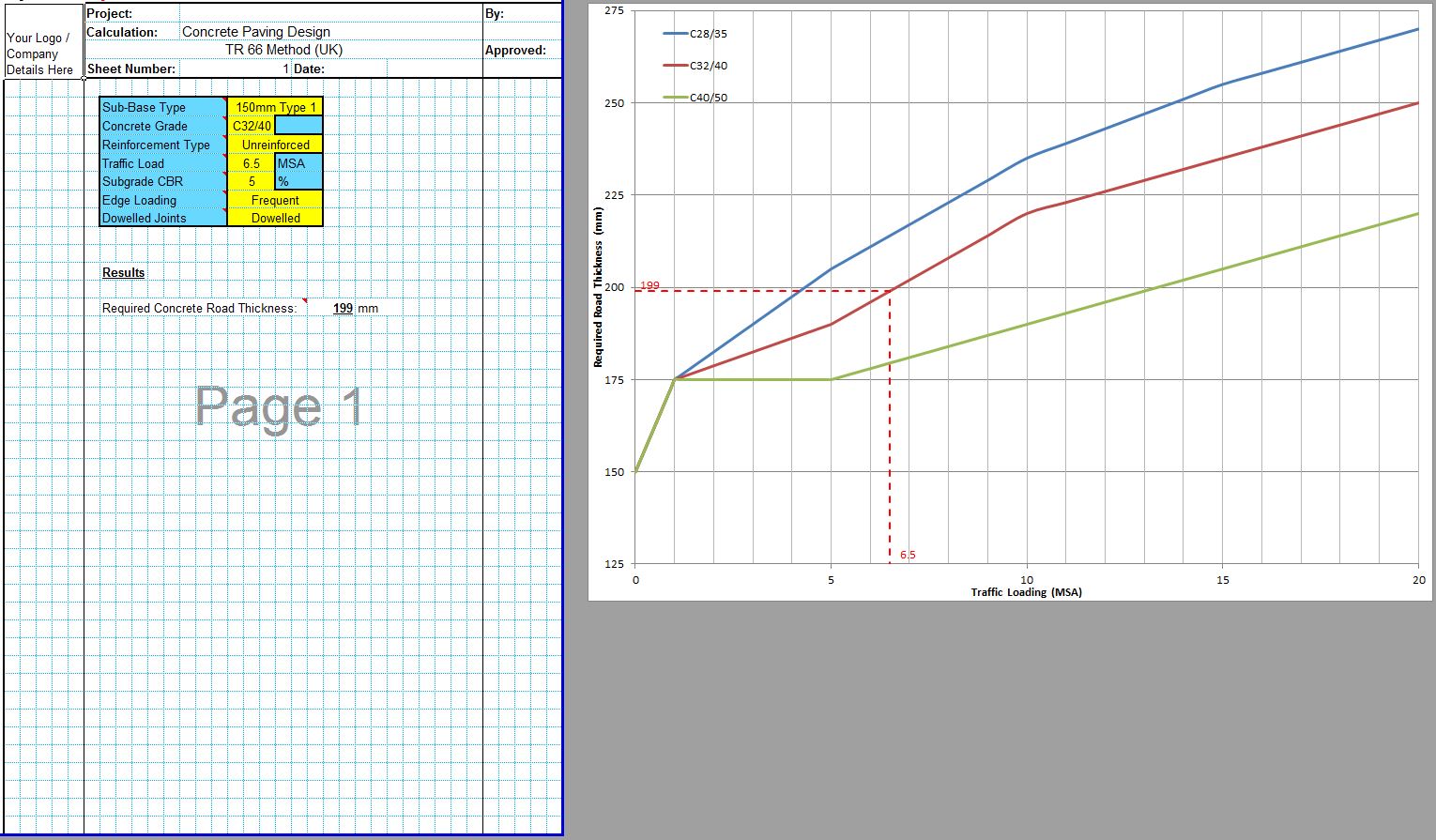The flexural strength of concrete is measured using a third point flexural test. Flexural testing of concrete is difficult and expensive as it involves relatively large beams and expensive equipment. Large beams are difficult to produce onsite and are susceptible to damage. The equipment involved in the flexural test is large and expensive and the test itself is not particularly accurate.
Due to the difficulties in undertaking the flexural strength test of concrete, it is common for the compressive strength to be tested using a standard concrete cube test and then this result converted into a flexural strength using a defined relationship. The CivilWeb Flexural Strength of Concrete spreadsheet includes tools to convert compressive strength to flexural strength.
Flexural Test
The flexural strength of concrete is a difficult and expensive parameter to measure and the test is not very precise. For this reason it is common practice to specify a required flexural strength, measure the concrete’s compressive strength and then use a calibrated relationship between the two parameters to check compliance. This gives the advantage that compressive strength is relatively easy to determine, but it does introduce an element of doubt regarding the proper relationship between compressive strength and flexural strength which is slightly different for each concrete mix.
Three Point Flexural Test
The standard test is the three point load test which tests a beam of concrete. This is sometimes sawn out of a pavement slab for insitu results. This beam is heavy and difficult to handle and can be susceptible to damage, particularly if it is transported from a site location.
A centre-point flexural test can also be undertaken but is not equivalent to the standard 3 point flexural test. The 3 point flexural test stresses the central third of the beam to the same level allowing the beam to crack at the weakest point in the central third. The centre-point flexural test stresses the beam to a maximum stress in the centre of the beam forcing the beam to fail at this point. This is unlikely to be the weakest point in the beam so results can be more erratic and are usually 10% - 15% higher than the standard third point flexural test. Typically centre point flexural tests will be around 0.5MPa higher and cantilever tests will be around 1.1MPa higher than the equivalent three point load test. Diagrams showing the two methods are shown below.
The procedure for a three point flexural test of concrete is contained in ASTM C78. The centre-point flexural test of concrete procedure (which is not recommended) is detailed in ASTM C293.
Relationship Between Flexural Strength & Compressive Strength
Due to the difficulties in completing the third point loading flexural test of concrete, it is common to complete the standard compressive strength test and convert this result to indicate the flexural strength of the concrete. Further details on the compressive strength test for concrete can be found in our Compressive Cube Test post.
Flexural Strength of Concrete Spreadsheet
The CivilWeb Flexural Strength of Concrete spreadsheet includes several methods of converting flexural strength to compressive strength and estimating the flexural strength of the concrete at any age. It is available to buy below for only £5.
Our full Concrete Properties Suite of spreadsheets is available for only £10 and includes the Flexural Strength of Concrete spreadsheets.
Download Free Trial Version
To try out a fully functional free trail version of this software, please enter your email address below to sign up to our newsletter.

